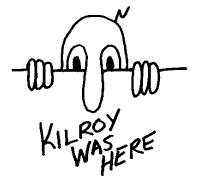
MiscellanyGremlins, Foo Fighters, book reviews, even Lena the Hyena. Here are the sidebars to history. Interesting, wonderful stories, myths and mysteries. The best of the books about the war years - then and now. |
||||||||||||||||||||||||||||||||||||||||||||||||||||||||||||||||||||||||||||||||||||||||
|
Comment. If the foo fighters were a natural phenomenon, one would expect at least a few modern reports from the thousands of commercial and military aircraft in the skies. From Science Frontiers #83, SEP-OCT 1992 . © 1997 William R. Corliss |
Wally Hoffman's sighting from a B-17 over Germany |
A contemporary, Basil Wolverton (creator of the strip Powerhouse Pepper) is something of a cult figure now and is still very popular among his fans. Try an internet search to find a lot of fun sites about him. Even better, visit his son's web site at www.wolvertoon.com/toons. His son shares his father's cartooning talent and sense of humor. Perhaps his greatest claim to fame was his drawing of "Lena the Hyena." Lena was a character in Al Capp's very popular comic strip called Li'l Abner. Lena was sooo ugly that anyone who saw her was immediately driven mad. No sane person, therefore, could tell you what she looked like. In the forties, Capp ran a nation-wide contest to see who could draw the ugliest Lena. Basil Wolverton won hands down.
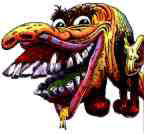
|
Here are the results of our two week long unscientific poll about the age of our readers (11-26-00 to 12/09/00). I expected (and indeed they started that way for the first few days) that the readers would be older. For the first few days the Silent Generation led followed closely by the GI Generation. It now appears that, like the rest of the Internet, younger folks lead in usage. At first I was disappointed that the youngest was third from bottom until I thought it through. The "D" Generation Age group is so truncated at the lower end. That is, there are fewer one year olds reading the site that the first ages of each other group (19, 40, 58, or 75). According to Strauss and Howe, authors of Generations, The "X" Generation is more like the "Lost" Generation (named by Gertrude Stein and picked up by Hemingway in The Sun Also Rises) than any others so maybe it isn't surprising that they read Kilroy. There was a single click on "Lost" Generation indicating that one person voted who was 100 years old or older. To the one who clicked the "Lost" Generation vote and if you are, indeed, a member of the fabled "Lost" Generation, please contact Kilroy Was Here. Is there a real statistician there? If so, tell us what this means. |
|
 Pictures of Patton keeping
his promise. Pictures of Patton keeping
his promise. "Another General would take
a month. I'll piss in the Rhine in a Week." -- General George S. Patton
|
|

Recommended
Books about WWII and The Korean War
|
|
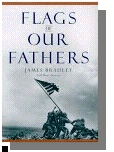
|
|
 James Bradley |
|
Book Review: No, this isn't John Wayne and "Sands of Iwo Jima". This is a story of American youth and a time of American innocence. Who were these six young, skinny kids in this photograph? The photo itself went on to become an icon of the 20th Century, but the men have remained largely six enigmatic figures against the horizon. Three of them would never know what impact this photo, and their actions, had on a country. The three survivors would know only too well. It's with heartfelt appreciation as a former Marine that I thank James Bradley for taking on this very personal and very emotional subject. His father, PM2C John Bradley, USN was truly made of greater stuff than most folks. His son's book is one of the most fitting tributes to a father's memory I could ever imagine. |
||
|
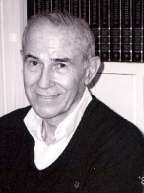 Adrian Swain |
|

|
|
This was indeed the time of his life and what a life it is! The title includes the words "Memoirs of a government agent from Pearl Harbor to the Golden Triangle." My interests, however kept me mesmerized through the WWII part. With matter-of-fact casualness Swain tells of having his B-17 shot down over occupied France. With understatement common to "The Greatest Generation," he details escaping with the help of the French Underground and of a personal greeting from the Pope after working his way back though the Vatican in liberated Rome. Any of these adventures, including the parallel story of escape and evasion by his tail gunner, would make a book on its own well worth the price. But the tale continues from WWII through another tour in the Air Force, the FBI, the CIA, DEA, and the war in Viet Nam. We will all love reliving his rolling reminders of the details of the 50's from Salk to Hula Hoops to the U-2 incident Swain's story starts with Basic training in 1944 with details ranging from the familiar "Take all you want but eat what you take" to saltpeter. Then on to B-17 training at Hendricks Field in Sebring, Florida. Later, like so many incongruities, he was qualified to fly a B-17 but could not legally drive a car – no drivers license! Although the book ends on a sad note (the loss of his beloved wife Phyllis) it is, throughout, an upbeat and optimistic life story and well worth the price of admission. You can get your copy by e-mailing him at: adianno@aol.com . |
||
|
|
||
|
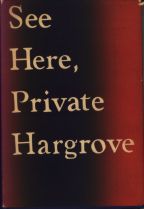
|
|
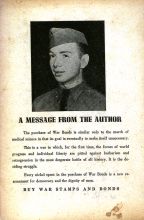 |
|
"A MESSAGE FROM THE AUTHOR. The purchase of War Bonds is similar
only to the march of medical science in that its goal is eventually
to make itself unnecessary. Every nickel spent in the purchase of War Bonds is a new rearmament for democracy and dignity of man.
|
||
|
Book Review by Jay Robert Cook I recently picked up this book at an estate sale. If you have ever been in boot camp or if you would find interest in what it was like from a private's perspective in the 40's, it is well worth the effort to track down a copy. Private Hargrove enters basic training bewildered by the new rules, language, and chores he must master. He unpacks army rifles covered with grease, pulls KP, suffers bumpy rides under a canvas topped lorry, empties ashes from coal fired ovens, and shovels "vitamin deposits" left by the cavalry. He is definitely a $21 a day once a month man; but, like thousands before him and since, he conforms with good humor and becomes a proud and loyal soldier. I had trouble identifying with Hargrove as I wasn't even born when the Japanese attacked Pearl Harbor; but, I did perceive through all the antics and tales, the making of young men fully capable of "giving em hell" as they rolled out of the train station for battle overseas. Has anyone out there ever heard of the "selective retirement system"? Hargrove mentions the drafting of soldiers back into civilian life, but never explains how or why it was done. It apparently had nothing to do with years of service as he describes a Corporal who was sent home after five months of duty. |
||
|
|
|
|

|
December 24, 1944 |
|
"‘Hey, I'm alive!' Drew
blacked out. When he came to, he found himself on a beach, naked
protected only by a raincoat thrown over him. He heard a faint
voice ‘Throw
him in there too.' Drew, r The book consists of many short stories detailing individual accounts of the disaster. Even the Introduction has 38. These were compiled from hundreds of interviews and research. Andrade includes many actual copies of letters. Perhaps the most moving are letters from parents to their sons before they knew they were dead. One story in particular is very moving: "Lt. Gene Barwick died that night. They never recovered his body. Each Christmas Eve reminded Barwick's parents of his death. His young bride eventually remarried and had two children but 20 years after her first love's death, she took her own life on a Christmas Eve." Many who died were only 18 to 21 years
old and came from 47 of the (then) 48 states. All are listed
by state in the In Memoriam Section at the end of the book as
are the survivors. Note: Those of you who reside in NYC, check out www.queenslibrary.org. Click on "Programs for Adults" where you will see the June schedule. Allan will be giving his slide lectures and display of Leopoldville memorabilia. He was consulted for the History Channel's Leopoldville show about the disaster. See www.historychannel.com then click on "All Exhibits." You can contact the author directly at:
agandrade@earthlink.net
or order the book from: |
|
|
|
|
|
F4U Corsair Action & Accidents: True Tales of Trial and Terror
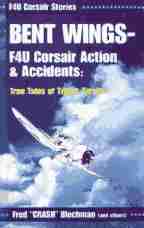
To order Bent Wings, F4U Corsair Action & Accidents: E_mail Fred for his address. fblechman@juno.com. He'll send a soft cover copy to anyone in the USA, autographed as directed, for $18 postpaid, no sales tax. Hardcover editions are available from the publisher, Xlibris (toll_free 888 - 7XL IBRIS) for $25 plus shipping. For more information on the book, go to: xlibras or BentWings or call him at (818)346-7024, 9AM_5PM Pacific Time.
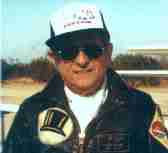 Fred "Crash" Blechman |
This is a book as unique as its subject, the F4U Corsair. It offers insiders’ knowledge with real larger-than-life characters and is told with insight, detail and humor — lots of humor. The author claims Japanese Ace status having damaged, destroyed or otherwise put out of commission five American fighting aircraft. He adds, “and after over 30 arrested carrier landings, I learned to drive a car.” In training, upon being told it was time to solo, the instructor said, “You tried to kill me enough times, now try it with a check pilot.” The book features 43 stories by ten former Corsair pilots, 376 pages, 20 illustrations and photos, and 23 Corsair accident reports Another reviewer says: “If you know anyone who flew the Corsair — or wish they had — they would enjoy this book. . .” This includes most everyone. The Corsair and the Mustang were the glamour fighters of WWII. To fly one of these was the dream of every pilot or pilot wannabe of that period. I might add, for anyone who has landed on one of the old straight deck carriers and silently thought, “I’ll be damned.” it’s a must-read! His descriptions of carrier approaches and landings are superb. I felt like I was back in the cockpit — so very many details that I had forgotten. The book is, in part, his own story as well as that of others. Chapter 16 is devoted to “Finding your lost flying buddies.” It offers tips to help your search. Part II — Short stories by Daniel L. Polino. Some are sad (the loss of a buddy) and some interesting stories of the F4U. Part III — excerpts from a book by Owen Dykema called Letters from the Bird Barge.” In these excerpts, Dykema takes credit for the carrier approach technique required of the F4U with its 15-foot long nose (no visibility to the front at approach speed). During the development of this technique, he had a running battle with the LSO, coining a new title, “LSOB.” His technique became the standard and is described in detail. Part IV — Stories told to the author by William “Country” Landreth. This part includes an excellent account of a crash landing and capture during WWII. You must read this! Part V — Stories from the book Tail End Charlies - Navy Combat Fighter Pilots at War’s End. by Roy D. “Eric” Erickson. I was transfixed by first hand details of carrier operations at sea during World War II. An unexpected call to duty resulted in his participation in the sinking of the 64,000-ton Yamato, the end of the world biggest battleship . Part VI — Stories by Wallace Bruce Thomson. After training, Thomson flew F4F Wildcats in Oahu but, as he graduated to Corsairs, continued through Turtle Bay, Bougainville, Rabaul and Green Island. All remind a WWII history buff like myself of the classic battles of the Pacific. Thomson accompanied the legendary “Pappy’ Boyington when he was shot down (see below for information on the books Ba Ba Black Sheep by Gregory (Pappy) Boyington and Bye Bye Black Sheep by Masajiro Kawato, the Japanese ace who shot him down). During that same month Thomson himself shot down two Zeros and damaged a third. Thomson continues with interesting observations about Boyington and his “Black Sheep Squadron,” dispelling a few myths. Blechman’s book concludes with stories by John R. “Jack” Eckstein, “Cookie” Cleland, Gene Hendrix, and Randy Moore — all of which are really good reading. See http://www.expage.com/bentwings for more info |
|
|
|
|

Anton Myrer
|
This is a 900+ page novel that depicts life in the US lnfantry from World War I through Vietnam. The main character in the book, Sam Damon, de- scribes: life in the military during battle; personal difficulties the soldier faces during peacetime; family life in the military; and the trials and tribulations of soldiers at every rank, in battle and in peacetime. Myrer is an outstanding military historian and the text of the novel is inter- spersed with personal musings, pains, triumphs, horrors, historical facts regarding military strategies, victories, defeats, and good or bad luck during battle throughout the history of human warfare. Because of the significance of the leadership implications, accuracy of depictions of war and peace, impact and relevancy of realism portrayed, and the training value inherent in this book, it is said to be required reading for officer students at military war colleges. I commend the reading of this outstanding book to all the KILROY WAS HERE people. The jacket of the book dis- closes that NBC made a 12-hour documentary series based on the book some time ago. I did not see the documentary and therefore cannot comment on that series. My own reading of the book brought feelings of admiration for the soldiers described, anger at the many instances of poor leadership, horror at the atrocities described during wars, respect for the excellence of leadership of many of the soldiers, appreciation of the valor, bravery, and dedication of members of the US military, and empathy for the families of members of our professional military. Above all, the positive attitudes portrayed by Anton Myrer, through the voice of Sam Damon, reflect the leadership qualities that any military leader could well emulate. Burl E. Gilliland, |
|
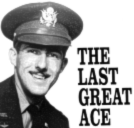
Charles A. Martin
|
This is a remarkably well written, detailed, almost scholarly book. While he uses his writing skills to fill in details like specific conversations, the facts are there and well documented (the copious footnotes give it the scholarly feel). The author, Charles A. Martin, calls it a "novelized biography." His attention to detail and the filling in of blanks from hundreds of interviews makes this book as easy to read as a novel – indeed a "novelized biography." His combat dogfight descriptions are about the best I've read -- almost makes you feel like you were there. Each chapter starts with a short quotation by some expert, including one by Capt. John Tilley (his story is here in the "The Way We Were" site.) One of the best is by Charles Martin himself: "These hot shot pilots play a deadly game. Like the matador they trick and try their deadly foe. They must strike and kill, and see no more. If they took too long they might see that the foe is another matador." It is, indeed, what they call a "good read." |
|
E. B. Sledge |
My all time favorite! Really talks, not just to the horrors of war, but to the filth and pain! Editor's Note: Sledge is no longer with us but he is remembered
at Auburn. See: |
|
William Shirer |
Makes it a lot more understandable |
|
Gregory (Pappy) Boyington |
Marine Corps ace who couldn't get along with authority. |
|
Masajiro Kawato |
Japanese Ace who shot down Pappy Boyington |
|
Samuel Eliot Morison |
A "Short" History of the U.S. Navy in the Second World War. It's short because it's a short version of his very intimidating 15 volume History of U.S. Operations in WWII |
|
Douglas MacArthur |
Perhaps our greatest soldier tells his story. |
|
Winston S. Churchill |
A very detailed look at WWII from the British viewpoint |
|
Tom Brokaw |
Brokaw tells stories about individuals of the "GI" generation who come to age during the Great Depression and WWII. Slightly "PC" but still good. |
|
Jim Wilson |
Recommended by: Gerald Moses, 2nd Bn, 1st Marines 1949-1951. "The most comprehensive report I've seen on the Chosin Reservoir episode. It explains why the people I met in the 1st Marines the following January were like they were . . . not shellshocked, necessarily, but certainly battle weary. I haven't seen "Saving Private Ryan," but you certainly get a taste of blood and cordite from Wilson's book, as well as the stripped down condition of the Marine Corps at the outset of the Korean War." Thanks to Gerald Moses |
|
 Capt. John Thornton |
Recommended by: "Another very good book! It's full of humor as well as horror. It's by a friend of mine who is a retired Navy Capt. He was the first helicopter pilot captured in the Korean War. His book documents his time as a POW as well as what his wife, Jinny, was going through back home. At one time there were plans to do a movie on his experiences but so far has not been done. Ernest Borgnigne was going to play the part of John." Thanks to: Ray Hildebrand. |
|
Iris Chang |
In December 1937, the Japanese army invaded the ancient city of Nanking, systematically raping, torturing, and murdering more than 300,000 Chinese civilians. This book tells the story from three perspectives: of the Japanese soldiers who performed it, of the Chinese civilians who endured it, and of a group of Europeans and Americans who refused to abandon the city and were able to create a safety zone that saved many. |
|
Deceptions of World War II
Seymour Reit; Signet, 1980 |
"Another enemy decoy,
built in occupied Holland, led to a tale that has been told
and retold ever since by veteran Allied pilots. The German "airfield,"
constructed with meticulous care, was made almost There were wooden hangars, oil tanks, gun implacements, trucks, and aircraft. The Germans took so long in building their wooden decoy that Allied photo experts had more than enough time to observe and report it. The day finally came when the decoy was finished, down to the last wooden plank. And early the following morning, a lone RAF plane crossed the Channel, came in low, circled the field once, and dropped a large wooden bomb." Thanks to Wendy Barra, author & mother |
|
Steven Ambrose |
I just finished reading this book. I highly recommend it! Thanks to Brian Boettcher |
|
|
These books are available at . . . |
|
|
|
Send Corrections, additions, and input to:
|
|
| .......................... | ................. |
On to Miscellany, page 2 |
|
Visitors since
June 6, 2000 |
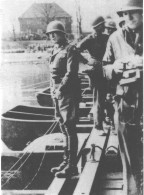

 ealizing
that they thought he was dead, yelled." This is just one
of many harrowing tales of a life and death struggle resulting
from the SS Leopoldville sinking. SS Leopoldville Disaster,
December 24, 1944, by Allan Andrade (The Tern Book Company.,
$21.95) is the story of this troopship loaded with American
troops being rushed to the help in the Battle of the Bulge.
It was sunk barely five miles from shore taking with it 763
American servicemen.
ealizing
that they thought he was dead, yelled." This is just one
of many harrowing tales of a life and death struggle resulting
from the SS Leopoldville sinking. SS Leopoldville Disaster,
December 24, 1944, by Allan Andrade (The Tern Book Company.,
$21.95) is the story of this troopship loaded with American
troops being rushed to the help in the Battle of the Bulge.
It was sunk barely five miles from shore taking with it 763
American servicemen.